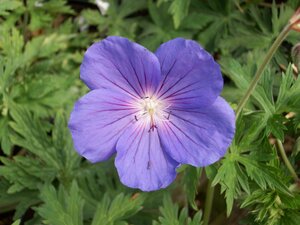Hosta First Frost
Why Buy Me?
- Ideal for shade
- Suits a woodland theme garden
- large leaves, often 2 toned
Growing Conditions
Light:
Performs best in partial shade to full shade, though it tolerates some morning sun. In cooler areas, it can take more sun, but in hotter regions or exposed locations, provide afternoon shade to prevent leaf scorch and preserve leaf colour.
Soil:
Prefers moist, fertile, well-drained, humus-rich soil. Tolerates a wide range of soil types if well-drained, including slightly acidic to neutral pH. Avoid very dry or compacted soils, which can limit growth.
Exposure:
Thrives in a sheltered position, protected from strong winds and full midday sun. Hardy throughout the UK.
Drought Tolerance:
Moderately drought-tolerant once established, though best performance comes with consistent moisture. Dry conditions can cause leaves to wilt or become tatty, especially in sun.
Cultivation & Care
Planting Time:
Best planted in spring or early autumn. Spring planting gives roots time to establish before peak growth; autumn planting allows for root development before dormancy.
Spacing:
Allow 45–60 cm (18–24 inches) between plants. Mature plants typically reach 40–45 cm (16–18 inches) tall and 60–75 cm (24–30 inches) wide, forming a dense, rounded clump.
Watering & Fertilisation:
Water regularly, especially during dry spells. Apply a balanced, slow-release fertiliser in spring to support strong foliage development. Avoid overhead watering to prevent leaf damage and fungal issues.
Mulching & Pruning:
Mulch in spring with organic matter to retain moisture and suppress weeds. Keep mulch away from the crown. Cut back foliage after the first frost in autumn once leaves die down naturally. Remove any dead or damaged leaves during the season to keep plants tidy.
Propagation:
Best propagated by division in spring or early autumn. Divide clumps every 4–5 years to maintain vigour and prevent overcrowding.
Seasonal Interest
Spring:
New foliage emerges with thick, blue-green centres edged in bright yellow, creating striking early-season contrast. Leaves are slug-resistant due to their thicker substance.
Summer:
Yellow margins turn creamy white, and the contrast with the blue-green centre intensifies. In mid to late summer, pale lavender flowers appear on tall stems, adding light vertical interest and attracting pollinators.
Autumn:
Foliage remains attractive into autumn, often holding colour and form until the first frost—true to its name. Eventually dies back neatly for winter.
Winter:
Deciduous. The plant dies back fully in winter. Remove spent foliage after frost to reduce the risk of pests and diseases.
Wildlife & Garden Use
Wildlife:
Flowers attract bees and other pollinators. The dense foliage can offer cover for ground-dwelling insects.
Garden Use:
Ideal for shady borders, woodland gardens, underplanting shrubs, or in containers. Adds bold texture and structure with its thick, variegated leaves. Excellent for creating contrast with finer-leaved or darker-foliaged plants.
Companion Plants:
Pairs well with:
-
Heuchera varieties (e.g. ‘Marmalade’, ‘Obsidian’, ‘Forever Purple’)
-
Ferns
-
Brunnera
-
Astilbe
-
Pulmonaria
Blends beautifully with silver, burgundy, and lime-green foliage, and complements soft purple, pink, and white blooms.
Transform your home and garden with the Hosta First Frost, a must-have for any season. Order online now for quick and easy shopping, or drop by your local Thompson's Branch to explore it up close and get personalised recommendations.
-
EAN code9000001858
- Brand
- AspectShade
- Flower Colourpurple
- Foliage ColourGreen/White
- Width in ft2-3ft (60-90cm)
- Height in ft2-3ft (60-80cm)
- Pot size2 litre pot
Collect your Order from one of our sites!
Order and pay online and select the day you would like to collect your order from one of our four sites.
Local deliveries available, please order and pay online for delivery within 5 working days. See our terms & conditions.




